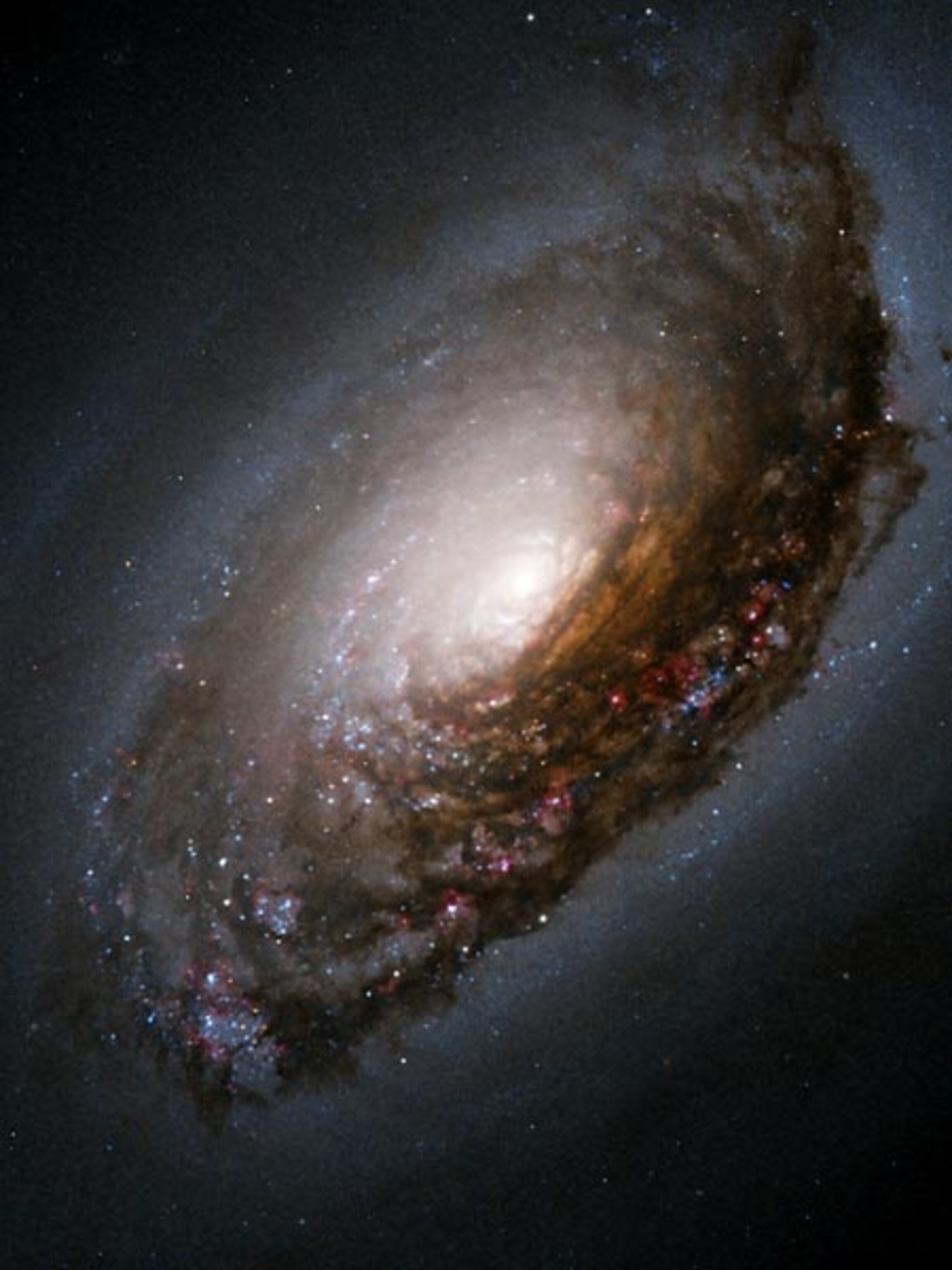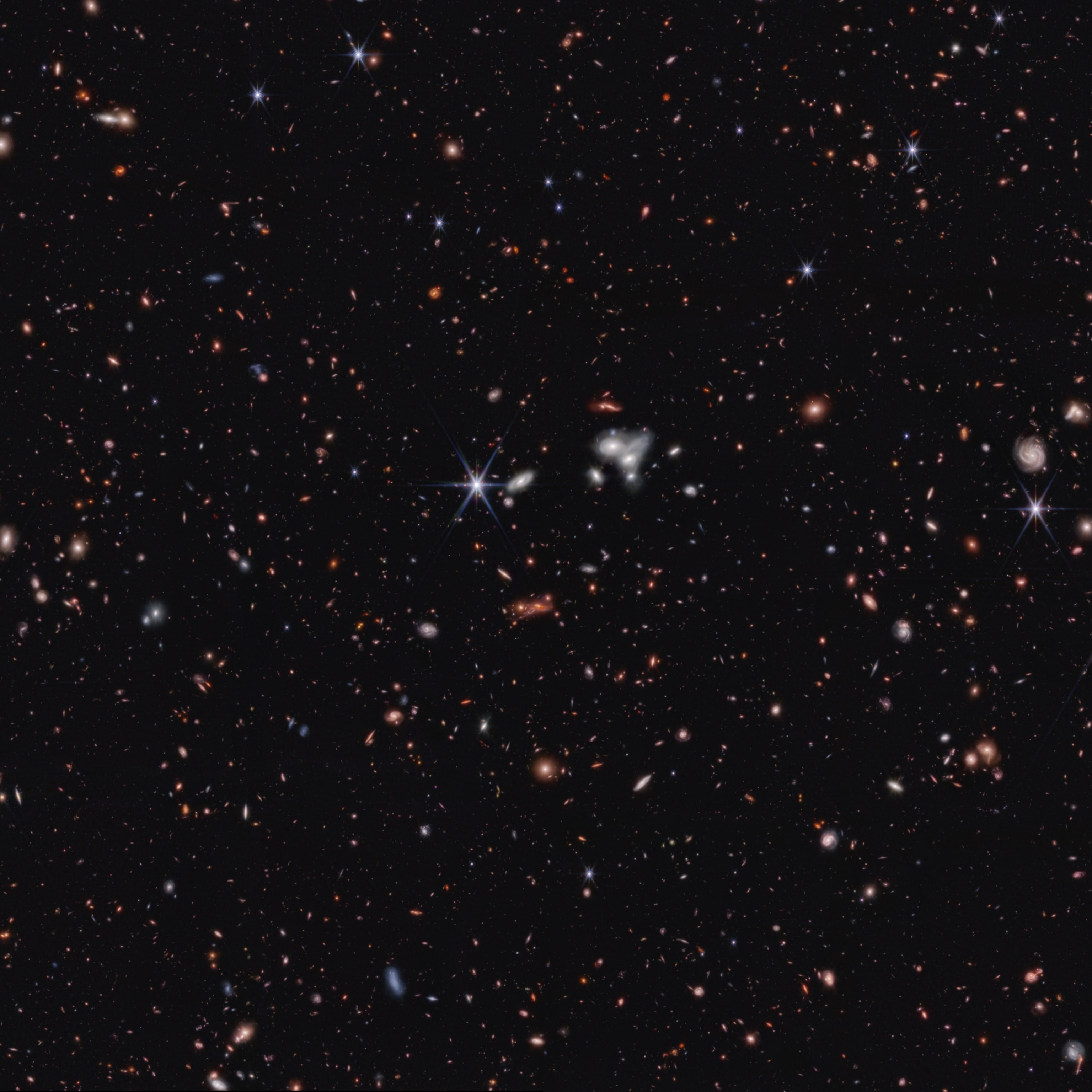
Astronomers probably just saw a black hole swallow a dead star
Ripples in the fabric of spacetime reveal what may be a first-of-its-kind cosmic collision.
Some 900 million years ago, a black hole released a terrible belch that echoed through the cosmos. On August 14, the resulting ripples in the fabric of spacetime passed through Earth—giving us the best evidence yet of a never-before-seen type of cosmic collision that could offer new insights on how the universe works.
The detection, called S190814bv, was likely triggered by the merger of a black hole and a neutron star, the ultra-dense leftovers of an exploded star. Though astronomers have long expected such binary systems to exist, they’ve never been seen by telescopes scanning the heavens for different wavelengths of light. (See the first image of a black hole's silhouette, made using a gigantic array of radio telescopes.)
However, astronomers also expect such systems to create ripples known as gravitational waves if and when the black hole and neutron star merge. These spacetime ripples were predicted more than a century ago by Einstein’s general theory of relativity, which suggested that the collision of two extremely massive bodies would cause the very fabric of the universe to wrinkle.
Gravitational waves were detected for the first time in 2015, when the LIGO observatory picked up the signal of two black holes becoming one. Since then, LIGO and its European counterpart, the Virgo observatory, have detected additional black hole mergers, as well as the collision of two neutron stars. LIGO and Virgo both detected S190814bv, and if it is in fact a neutron star-black hole merger, it’d be the third distinct kind of collision picked up with gravitational waves.
Though detectors also picked up signs of a neutron star-black hole merger on April 26, researchers say that S190814bv is far more compelling. The April event has a one-in-seven chance of being noise from Earth, and false alarms akin to the April signal are expected to pop up once every 20 months. But S190814bv almost certainly came from beyond our planet, and to see a false alarm resembling S190814bv, the LIGO team estimates that you’d have to wait longer than the age of the universe.
“This is something to get much more excited about,” says LIGO team member Christopher Berry, a physicist at Northwestern University. “It’s much more likely to turn up a real one, so that means it’s worth investing more time and effort.”
Cosmic shredder
LIGO and Virgo also tracked the origin of S190814bv down to an oval patch of sky about 11 times wider than the full moon—making it possible for telescopes to follow up for unusual flashes of light. Instruments all over the world and in orbit have paused their regularly scheduled observations to join the hunt, posting their early results in real time.
“It’s very exciting,” says Aaron Tohuvavohu, the observatory duty scientist for NASA’s Swift telescope, which has been searching for flashes of x-rays and ultraviolet light in the same patch of sky as the gravitational wave signal. “I didn’t sleep all night, and I’m very happy to do that.”
If Swift and other telescopes do see the afterglow from the collision that LIGO and Virgo felt, it would be a huge deal for astronomy, since the light would let scientists see the innards of a neutron star for the first time, and possibly test the limits of relativity in new ways.
“That would be fantastic [and] dream-like for a theorist,” says LIGO team member Vicky Kalogera, a physicist at Northwestern University.
However, it’s not a given that telescopes will see anything. Current theory predicts that collisions of neutron stars and black holes won’t always give off light, depending on how the two objects’ masses compare.
The closer the masses of the black hole and the neutron star, the longer it takes for the star to spiral into the black hole. This lets the pair orbit each other more closely, which gives the black hole more opportunity to gravitationally shred the neutron star. Before this glowing confetti falls into the black hole, it can give off light that telescopes can pick up.
But if the black hole is much more massive than the neutron star, it can swallow up the star whole with little muss or fuss, giving off no light. Kalogera says that scientists are still combing through the data on S190814bv to put limits on the black hole’s mass, which should clarify the situation for this event.
Sizing up the situation
Another, stranger possibility is that the smaller object in S190814bv isn’t a neutron star at all.
LIGO and Virgo classify the mergers they see by the estimated masses of the objects in each collision. Anything below three times the mass of our sun is considered a neutron star. Anything more than five times the mass of our sun is considered a black hole. In this case, the smaller object in S190814bv is estimated to be less than three solar masses.
Related: Stunning Pictures of Galaxies












Though less massive black holes theoretically might exist, x-ray measurements of the cosmos haven’t yet found any signs of them. Likewise, our best theories for neutron stars say that if they get much bigger than two solar masses, they will collapse into black holes. What if this gap between three and five solar masses simply reflects a gap in our observations, and the smaller object in S190814bv is a pint-size black hole?
“There’s really two mysteries that this event might tell us about,” Berry says. “What is the maximum mass of a neutron star, and what is the minimum mass of a black hole?”
Subtle features of the gravitational waves might let scientists figure out the identity of S190814bv’s smaller object. And if follow-up measurements do pick up an afterglow—which Kalogera says could take weeks—it would all but confirm that the smaller object is a neutron star.
Whatever the signal ends up being, it will be a first, Berry says: “It’s a win-win situation.”
Related Topics
You May Also Like
Go Further
Animals
- Octopuses have a lot of secrets. Can you guess 8 of them?
- Animals
- Feature
Octopuses have a lot of secrets. Can you guess 8 of them? - This biologist and her rescue dog help protect bears in the AndesThis biologist and her rescue dog help protect bears in the Andes
- An octopus invited this writer into her tank—and her secret worldAn octopus invited this writer into her tank—and her secret world
- Peace-loving bonobos are more aggressive than we thoughtPeace-loving bonobos are more aggressive than we thought
Environment
- Listen to 30 years of climate change transformed into haunting musicListen to 30 years of climate change transformed into haunting music
- This ancient society tried to stop El Niño—with child sacrificeThis ancient society tried to stop El Niño—with child sacrifice
- U.S. plans to clean its drinking water. What does that mean?U.S. plans to clean its drinking water. What does that mean?
- Food systems: supporting the triangle of food security, Video Story
- Paid Content
Food systems: supporting the triangle of food security - Will we ever solve the mystery of the Mima mounds?Will we ever solve the mystery of the Mima mounds?
History & Culture
- Strange clues in a Maya temple reveal a fiery political dramaStrange clues in a Maya temple reveal a fiery political drama
- How technology is revealing secrets in these ancient scrollsHow technology is revealing secrets in these ancient scrolls
- Pilgrimages aren’t just spiritual anymore. They’re a workout.Pilgrimages aren’t just spiritual anymore. They’re a workout.
- This ancient society tried to stop El Niño—with child sacrificeThis ancient society tried to stop El Niño—with child sacrifice
- This ancient cure was just revived in a lab. Does it work?This ancient cure was just revived in a lab. Does it work?
Science
- The unexpected health benefits of Ozempic and MounjaroThe unexpected health benefits of Ozempic and Mounjaro
- Do you have an inner monologue? Here’s what it reveals about you.Do you have an inner monologue? Here’s what it reveals about you.
- Jupiter’s volcanic moon Io has been erupting for billions of yearsJupiter’s volcanic moon Io has been erupting for billions of years
- This 80-foot-long sea monster was the killer whale of its timeThis 80-foot-long sea monster was the killer whale of its time
Travel
- Spend a night at the museum at these 7 spots around the worldSpend a night at the museum at these 7 spots around the world
- How nanobreweries are shaking up Portland's beer sceneHow nanobreweries are shaking up Portland's beer scene
- How to plan an epic summer trip to a national parkHow to plan an epic summer trip to a national park
- This town is the Alps' first European Capital of CultureThis town is the Alps' first European Capital of Culture







